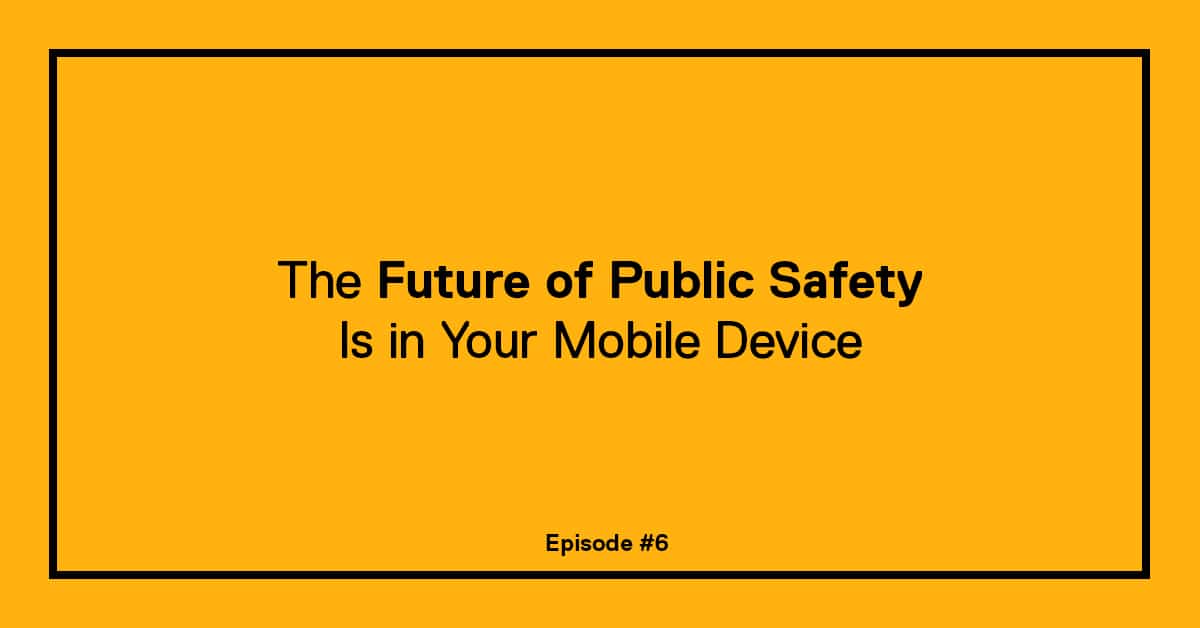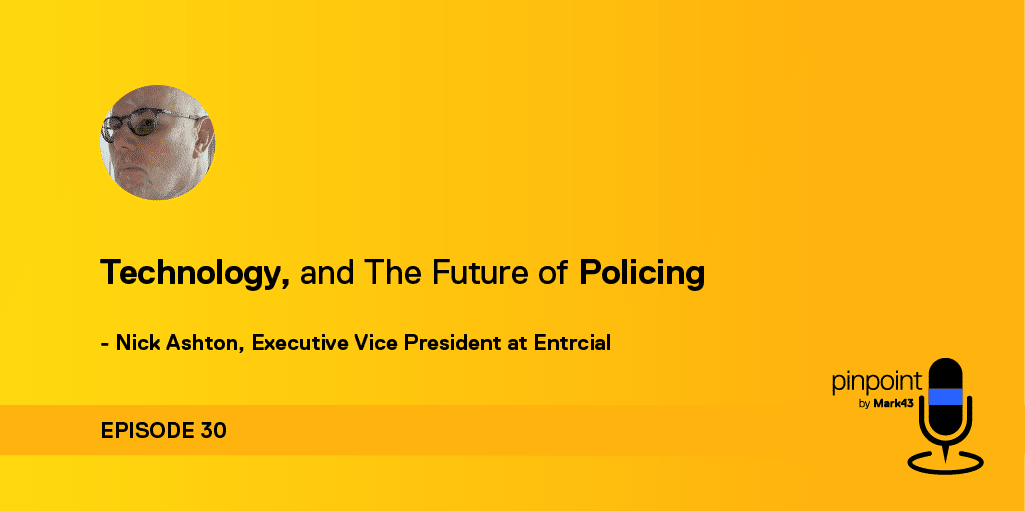Episode 6: The Future of Public Safety Is in Your Mobile Device with Dale Stockton
Matthew Polega, Co-Founder & Head of External Affairs | 04 April 2019 | 4 minute read

The future of public safety is in your hands. (Literally — the future is the smartphone in your hands.)
Dale Stockton joined us on this episode of Pinpoint, to discuss the intersection of mobile devices and public safety.
Dale has 32 years experience in the field as a law enforcement officer and retired as a police captain in Carlsbad, California. He’s the former Editor-in-Chief of Law Officer Magazine and founder of the Below100 officer safety initiative. And no, that’s not all: Dale also taught criminal justice for over 20 years, and consults on large technology projects for agencies today.
He has quite the resume — and quite the idea on where smartphones are taking law enforcement:
(function() { var qs, js, q, s, d = document, gi = d.getElementById, ce = d.createElement, gt = d.getElementsByTagName, id = 'soun_der', b = 'https://embed.sounder.fm'; if (!gi.call(d, id)) { js = ce.call(d, 'script'); js.id = id; js.src = b + '/embed.js'; q = gt.call(d, 'script')[0]; q.parentNode.insertBefore(js, q);}})();
Why Aren’t All Agencies Using Smartphone Tech?
Most agencies do have some degree of smartphone utilization, but they are using them mostly for investigators and administration. But, the mentality is beginning to change as agencies are realizing the potential ROI smartphones can bring to the table.
“Agencies are realizing that smartphones provide an incredible ROI.”
A quick example: Consider an officer in a situation with a juvenile. Without a smartphone, the officer will have to call dispatch to find the parents. Once dispatch locates the parents, they will relay the location of the officer and the child to the parents, then call the officer back to give him or her an update.
That’s a lot of moving parts.
Smartphones — even with just baseline functionality — eliminate the shuffle with dispatch all together.
Now, let’s take it a few steps further.
Smartphones also allow officers to:
- Take photos in the field
- Use the recording feature for interviewing witnesses
- Quickly ascertain geographic data, (e.g., proximity to a call or specific location of other officers)
- If your CAD is mobile-enabled, the officer isn’t constrained by proximity to their vehicle for access to important information
How Smartphones Are Increasing Officer Safety & Situational Awareness
Everyone is concerned with officer safety, and no one more than 32-year-veteran Dale Stockton.
“A smartphone developed properly, deployed properly, equipped to an officer properly, can be the ultimate multi-function device.”
One concern he has: Very few agencies can tell you exactly where an officer actually is, unless that officer is directly in their vehicle.
While virtually all agencies have vehicles with location-based tracking, what happens when the officer is on a foot chase and becomes injured?
Dale shared how he’s spoken personally with officers who feel much safer knowing their smartphones can provide their location to dispatch and fellow officers.
Realizing the Efficiencies of Mobile
Let’s look at electronic citations.
Electronic citations are a low-hanging fruit agencies could quickly take advantage of, and realize large efficiency gains. What’s more, they contribute to officer safety.
Even in 2019, if an officer writes a traffic citation, there’s a good chance they’re still using a triplicate form process. One, this is time-consuming. Two, it is often illegible, because the officer is handwriting on a soft pad. Lastly, it’s less safe; the added amount of time it takes to manually write a citation increases the officer’s time on the side of the road.
With electronic citations, most information is pre-filled, including location and officer data. The officer usually only needs to input the specific violation. What would have been a 15 to 20 minute interaction turns into a 3 to 5 minute interaction.
If an Agency Has Secured Funding for Mobile Deployment, What’s the Next Step?
If your agency has approved the funding, you may be scratching your head, trying to determine what to do next, where to begin, and what applications, hardware, and software to install. Don’t worry — it’s not complicated, but it does require management.
“The easiest way to get mobile transformation wrong, is by issuing a bunch of phones, and assuming everyone is going to make it work. That’s a big mistake.”
Here are a few steps you can take to ensure a smooth transition:
- Project management: Put someone in charge of implementing the mobile strategy, preferably someone in mid-level management. You want them to have some decision-making authority and the power to oversee it.
- Plan where you want to go: Crystalizing your desired outcomes will help determine hardware, apps, and what software to use.
- Start small, and scale up: Assess your current systems. You don’t have to equip the entire force at once — start small and course-correct as you implement more mobile tech.
- Involve stakeholders: You want buy-in from all stakeholders from the beginning, so be transparent. For instance, a labor union may not like geolocation at first, but once they understand it’s about officer safety, they’re likely to be supportive.
How Mobile Tech Will Transform Public Safety Within the Next 5 Years
Dale wasn’t shy on this one. He said mobile devices are going to be the primary tool for law enforcement personnel within the next 5 years.
Why? Well, when you untether an officer from their car, a world of possibilities quickly opens up. With a smartphone, they have full access to every piece of info an officer sitting at a desk or sitting in a car traditionally has.
Someone with a high-powered smartphone will be able to use the device as their computer. Inside their vehicle and at their desk, they will have a keyboard and larger screen available, but the computer itself, will be their smartphones.
Consider how much easier it will be for officers officers who don’t have to jump from one device to the other? When they are filling out paperwork at the end of the day, they dock their smartphone at their desk, and all the data is there.
This may sound too far-fetched, but Dale is already working with a mid-sized agency to do exactly that.
What’s One Tangible Step an Officer Could Take Back to Their Agency Right Now?
We ask this question to every guest.
Dale actually gave us three:
- Google other use cases of mobile tech in public safety.
- Visit a relevant trade show.
- Take a step back and ask yourself: “What would we be capable of if we could harness this tech?”
This post was taken from a recent episode of our public safety technology podcast, Pinpoint. Who would you like to hear from next? Email us episode guest and topic suggestions at pinpoint@mark43.com.





